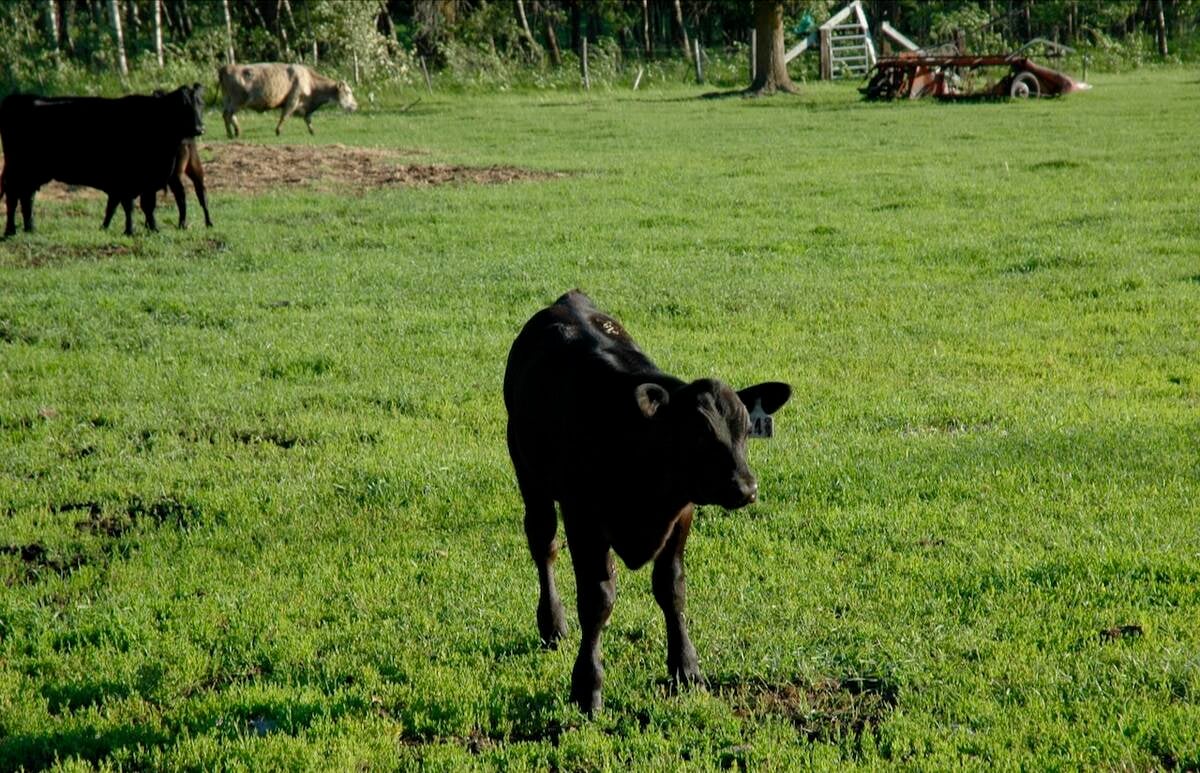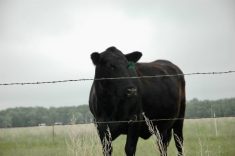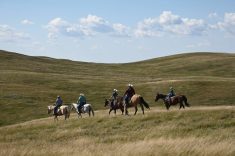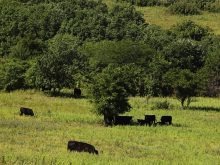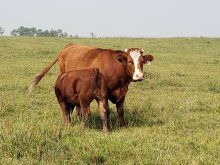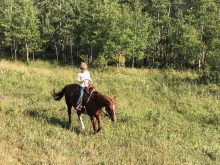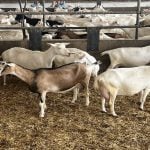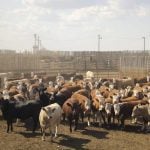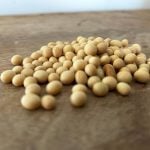There are many reasons among cow-calf operators as to whether they bring out their creep feeders during the grazing season.
To some producers, it is a matter of pure economics to put on profitable extra weight on spring calves — while to others, creep feeding makes for better autumn-preconditioned calves. Last and not least, there are producers who don’t see the value of creep feeding.
Many of them might have valid reasons. Yet it seems to me that whether one doesn’t want to creep feed or is one of those who haul out their creep feeders by the end of summer, I advocate that one should calculate its present economics, plus its practical advantages in 2025.
Read Also

Syngenta rolls out Envita Dry nitrogen-fixing biological
A new formulation of the Envita bacterium distributed by Syngenta is expected to help farmers tap into more of the nitrogen crops need throughout the season — without adding more fertilizer.
A new beef producer I met last year inherited a 250-head cow-calf operation. He asked me to determine the economic value for him of putting out his creep feeders at the end of this July. He doesn’t expect his spring calves (mostly born at the end of February) to eat much creep feed until the middle of September. That’s because his pastures up to now have received a few timely rains and thus have good carrying capacity, and his cows and first-calf dams are milking well.
Once the weather cools off, he expects all calves eat to up to three kg of creep per head per day. With a feed conversion of 6.5 pounds of creep feed (costing 15 cents per lb.) to one lb. of gain, it should be no problem to add 60 lb. extra weight onto calves that would otherwise weigh 700 lb. at weaning time if the creep feeder remained by his machine shed.
With such pertinent information added into the graph shown here, as well as an already pre-established contract price of $4.95 per lb. of weaned calf sold this October, a tidy profit of about $168.50 per 760-lb. calf or a return on investment of 288 per cent will be directly attributed to creep feeding.
TABLE: Creep feeding program, 2025
| Description | No creep (1) | Creep (2) |
| Expected wt. gain due to creep (lb.) | N/A | 60 |
| Weaned calf weight (lb.) | 700 | 760 |
| Feed efficiency | N/A | 6.5 |
| Expected creep feed used (lb.) | N/A | 390 |
| Expected weaning wt. price | $5.05 | $4.95 |
| Predicted calf value | $3,535.00 | $3,762.00 |
| Value of expected gain | N/A | $227.00 |
| Creep feed per tonne | N/A | $330.00 |
| Creep feed per pound | N/A | $0.15 |
| Total cost of creep feed | N/A | $58.50 |
| Profit per head | N/A | $168.50 |
| Return on investment (pct) | N/A | 288 |
Here is a general review of the major factors that determined this profit of $168.50 per head:
Established calf price
Some ag news states that grass and feeder calves are selling on historical highs driven by depressed calf crops and feedlot placements in the United States.
Calf price gradients
There is a sliding price discount as calves hit higher weight classes. In my example, I used a price discount of about $10 per hundredweight. As this price gradient narrows between weight classes, creep feeding becomes more profitable.
Feed costs
Creep feeding profits are attractive when calf prices are high relative to low feed costs. In 2025, I see that forage and grain prices are modest, which contribute to substantial 2025 creep profits.
Feed efficiency
The conversion of a well-balanced creep feed into saleable weaning weight is a major driver in the profitability due to creep feeding. It ranges from six to eight lb. per lb. gain for most grain-based creep feeds. For example, every 0.5 lb. improvement in feed efficiency means an extra $4.50 revenue per calf.
Aside from the almost unbelievable economics of 288 per cent return on investment, there are other practical benefits to creep feeding calves. Some other producers have told me that their creep-fed calves are not as dependent on the nursing cow by autumn.
As a result, calves are much easier to wean with less stress. Other producers say that creep-fed calves are bunk-broke, which is a real advantage when put onto background feeding programs.
Despite such positive and practical creep feeding advantages, I spoke with another cow-calf operator who runs about the same size of ranch, and he never considers creep feeding his spring calves. It’s not that he has anything against creep feeding, but he believes his cows milk well throughout the summer due to his heavily managed rotational pastures. Plus, he grows cover crops, and he pastures both cows and calves on their regrowth from August to late November.
As a result, he successfully gets similar performance on his calves’ weaning weights compared to his neighbours’ calves that are creep fed.
In summary, I value what this producer had to say, but I also value the experiences of people that seem to put their creep feeders onto pasture every year. For them and those new cow-calf operators who might consider creep feeding their calves in 2025, it’s a hard-to-beat profitable creep feeding year.


